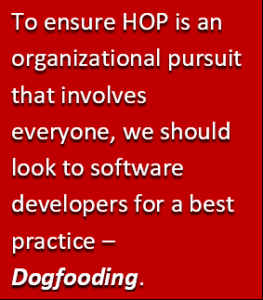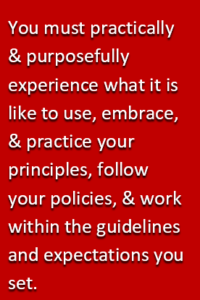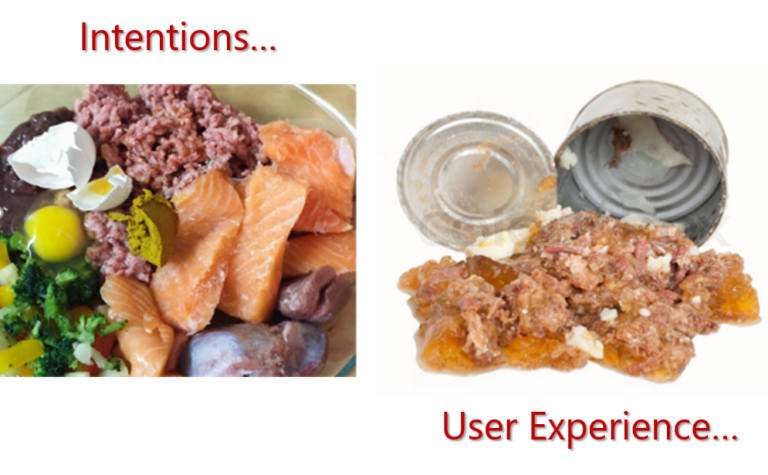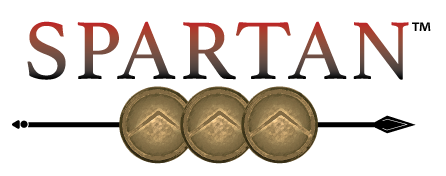Dogfooding HOP - Whole Organizational Participation in a
Human & Organizational Performance Culture
by Jason McAlister and Michael Peterson,
April 12, 2021

“Things done to others, rather than with them, are highly resisted, they are usually never implemented locally and, if they are, they rarely work.”
– Peter Pronovost, MD, PhD
 In his book, Safe Patients, Smart Hospitals, Dr. Peter Pronovost relates the story of 18-month old Josie King who died while receiving care in one of the world’s most respected hospitals, Johns Hopkins.1 Josie arrived with 2nd degree burns on 60% of her body and was on her way to recovery and release when she took a dramatic turn for the worse. Despite the knowledge and expertise of her caretakers, there was a breakdown in team collaboration, assertiveness on the part of nurses, and critical actions were not performed correctly. Her condition quickly deteriorated due to a central line catheter infection that caused vomiting, diarrhea, and dehydration and from narcotics misuse that caused cardiac arrest. The infection and narcotics rendered her brain dead and her parents were eventually forced to take her off life support.
In his book, Safe Patients, Smart Hospitals, Dr. Peter Pronovost relates the story of 18-month old Josie King who died while receiving care in one of the world’s most respected hospitals, Johns Hopkins.1 Josie arrived with 2nd degree burns on 60% of her body and was on her way to recovery and release when she took a dramatic turn for the worse. Despite the knowledge and expertise of her caretakers, there was a breakdown in team collaboration, assertiveness on the part of nurses, and critical actions were not performed correctly. Her condition quickly deteriorated due to a central line catheter infection that caused vomiting, diarrhea, and dehydration and from narcotics misuse that caused cardiac arrest. The infection and narcotics rendered her brain dead and her parents were eventually forced to take her off life support.
From this tragedy, Pronovost and others introduced aviation-style checklists into health care that drastically improved the quality of patient outcomes. Pronovost concluded, “Errors are generally not made from a lack of technical expertise but rather from bad teamwork and a toxic hospital culture, something that is endemic to the entire health care system.”2 “To improve health care, we need to examine how culture affects the systems and structures within which we do our work. Culture influences how we deliver care, how we interrelate with our colleagues, and how we treat our patients. Similarly, the systems in which we work and live, in turn, affect culture they are interconnected.”3
The 5-step Central Line Catheter checklist and associated culture of empowerment, communication, and data collection that his team developed from a 120-page procedure proved to be game-changing. “The results were astonishing. Only three months after we started the study, the overall median rate of catheter-related bloodstream infection dropped from 2.7 infections per 1,000 catheter days to nearly zero. …That rate stayed at zero for the entire 18 months of the study. In fact, the rates were still staying the same four years later. Our work in nearly eliminating central line infection in Michigan saves an estimated 2,000 lives and $200 million a year.”4
Despite this great success, his initiative hit a major setback when New Jersey hospitals attempted to use the checklist in a top-down fashion without the supporting culture and experienced no change in infection rate. “I was disappointed, but in many ways, I was not surprised. The checklist probably made sense to them; it’s logical, it’s easy to use, it’s effective. I am sure they figured all they had to do was use the checklist and they would get the same results as Michigan. But we knew that the checklist doesn’t work without both culture work and valid measurement.”5
Not unlike the health care industry, Human & Organizational Performance practitioners may see wide variance in their outcomes from company-to-company or from location-to-location within a company. One of the reasons that Human Performance evolved into Human & Organizational Performance (HOP) is that HOP was erroneously viewed as a program or set of tools and processes that were imposed on frontline workers instead of supporting tools and leadership techniques that are performed within the framework of HOP principles with the frontline. Adding “Organizational” stresses the holistic nature of HOP and its inclusive application across the entire workforce – from the frontline to the boardroom.
 Like Pronovost’s checklist, context, culture, and ownership matter if HOP is to achieve it potential to produce improved performance and culture through learning, continuous improvement, and creation of adaptive capacity and resilience. To ensure HOP is an organizational pursuit that involves everyone (i.e. done with people), we should look to software developers for a best practice – dogfooding.
Like Pronovost’s checklist, context, culture, and ownership matter if HOP is to achieve it potential to produce improved performance and culture through learning, continuous improvement, and creation of adaptive capacity and resilience. To ensure HOP is an organizational pursuit that involves everyone (i.e. done with people), we should look to software developers for a best practice – dogfooding.
“Dogfooding”? Did I just take that sloppy goop you dump out of a can and turn it into a verb?
Admittedly, it is a rather unappetizing visual… especially if it is being offered up as a meal for you to enjoy with family, friends, coworkers… and even customers. So, dig in! Well, why not? After all, it’s you that is asking them to eat it.
In its original context “dogfooding” is IT slang for the use of one’s own products and services. It defines a willingness to internally utilize the very tools and processes that are intended to bring value to your customers. It is the perfect way to test your product, validate its value, and understand areas for improvement. Concepts and tools designed in the back office rarely live up to and meet the expectation of the end user. Dogfooding gives developers exposure to the user experience associated with the product, with all its flaws and failures, earlier for rapid identification and correction of issues that do not meet their intent or live up to expectations.
 While the term was originally coined to capture the concept of software developers using their own products in-house, the practice has equal, if not greater value, to inform HOP culture implementation. There is nothing more toxic than to watch a leader or manager dictate from above the policies and procedures you must live with, but that they themselves are not willing to follow. Their hubris and ego become visible and cancerous to the desired HOP culture – Nothing erodes mutual trust, psychological safety, and morale faster than watching a leader lead with a “do-as-I-say, not-as-I-do” leadership style.
While the term was originally coined to capture the concept of software developers using their own products in-house, the practice has equal, if not greater value, to inform HOP culture implementation. There is nothing more toxic than to watch a leader or manager dictate from above the policies and procedures you must live with, but that they themselves are not willing to follow. Their hubris and ego become visible and cancerous to the desired HOP culture – Nothing erodes mutual trust, psychological safety, and morale faster than watching a leader lead with a “do-as-I-say, not-as-I-do” leadership style.
If you purport to improve the quality of those you lead, “eat” what you require them to “eat”. It is the equivalent of walking a mile in their shoes. To truly understand the impact of HOP, you can’t limit its principles, beliefs, and supporting tools and leadership techniques to only a selected segment of the organization. Leaders at all levels of the organization must be active participants to ensure a connected, aligned, and balanced effort – diverse expertise, specialties, and perspectives united to address common challenges and realize opportunities. You must practically and purposefully experience what it is like to use, embrace, and practice your HOP principles, follow your policies, and work within the guidelines and expectations you set.
Even with the best intentions, there may be a significant difference in intent of policies and programs and how they are experienced in the field.

From a HOP perspective the concept of dogfooding is a perfect blend of principles and actions that reflect the desired deep beliefs, espoused values, and visible artifacts of a healthy HOP culture.6 Do you want to create mutual trust and lead by example? Join your troops on the frontline and see the world from their perspective. Live it. If learning is critical to your goals, what better way to educate yourself than “enroll” in the programs you oversee and use the tools needed to accomplish the tasks you ask of others? Think of the new insights you could uncover just by changing your perspective.
Dogfooding is the ultimate practical continuous improvement process. Why? Because if you’re living in it, and it sucks, you will be motivated to improve and fix it. Dogfooding is a catalyst to ownership – You’ll have a front row seat to challenges and opportunities facing your organization. Issues won’t be lost in translation as messages make their way to you. Honesty, could you really identify or empathize with the problem if it doesn’t impact or affect you personally? Maybe, maybe not. True insight comes from the practical application and use of the systems you govern or oversee. Getting in the trench with your teams is one way to understand and feel the pain that they experience. The further away each layer of bureaucracy or management takes you, the further from the pain point you become and less able to shape collaborative solutions that will resonate with the workforce.
A clear example most of us have seen is the arbitrary application of company policy or SOPs. Morale is greatly damaged when you see a senior member of the company routinely circumvent, or even refuse to comply with company policy. They believe that their importance to the company, their position or job title entitles them to be “above the law”.
A recent example of lack of management involvement in the employee experience occurred during the COVID-19 downturn. Like many organizations, this company struggled to adjust to the new economic realities. After a round of furloughs, it was determined that reductions in pay were required to keep the company afloat. It was decided that all employees except for the executive staff (those making the decision to cut pay) would take a 10% pay cut. This is the antithesis of dogfooding. The leaders created a “meal” and set the table that they had no intention of ever partaking in. Do they really care how lousy the meal tastes? Of course not, they have no intention of tasting it.
The concept of Dogfooding isn’t for your people, above or below you. The ones below you get it and endorse it. This isn’t for your boss to casually leave a copy of on his desk hoping he will incorporate it. This is for you, the reader, because honesty you’re the only one who can take direct action and apply it to your sphere of influence. We all want to be led by people willing to fight with us in the trenches, no one is going to turn that offer down. But, when it becomes our time to be that leader, sometimes it can difficult because the act of dogfooding involves patience, sacrifice, and humility. But in the end, if you decide to sit down and have a meal at the table you prepared, you will be amazed at the insights you will learn. Some things might taste great, others might need a little salt. The key is sitting down and sampling what you have set in front of others and planning what’s on the menu together.
As Eric Greitens noted in his book Resilience, “Knowledge matters. But our efforts too often stop at knowledge, because it’s easier to measure what we’ve told people than it is to measure how we’ve changed people. It is easier to preach to people than to practice with them.”7 Dogfooding allows you to practice with them and that changes everything
References:
1 – Pronovost, Peter M.D., PhD., and Vohr, Eric, Safe Patients, Smart Hospitals: How One Doctor’s Checklist Can Help Us Change Health care from the Inside Out, Penguin Group, New York, New York, 2010.
2 – Ibid, p. 35.
3 – Ibid, p. 39.
4 – Ibid, p. 142.
5 – Ibid, p. 175.
6 – Schein, Edgar H., “Coming to a New Awareness of Organizational Culture”, Sloan Management Review, 25:2 (1984 : Winter).
7 – Greitens, Eric, Resilience: Hard-won Wisdom for Living a Better Life, First Mariner Books, New York, NY, 2015.
About the Authors:
Jason “Mac” McAlister served in the United States Marine Corps for 15 years, and another 8 years in the United States Navy. He began as an enlisted Marine in Special Operations. After completing his bachelor’s degree, he was commissioned as an Officer and flew AV-8B Harriers with the famous Black Sheep Squadron (VMA-214). From there he completed an inner service transfer to the Navy Reserves and flew T-45 Goshawks as a flight instructor until he retired in 2012. He founded Wraith Systems which manufactures flight controls for F-35 Joint Strike Fighter simulation training and is also a founding member of SPARTAN Training & Performance (https://spartantp.com/), a HOP-focused consultancy. Mac holds a BA from the University of Nevada. He enjoys competing in Ironman triathlons, leading mission trips to Central America, and working with homeless organizations in the Ft. Worth area. He resides in Texas with his wife and has three daughters and five grandchildren.
Michael “Tung” Peterson is a Navy Fighter Weapons School (i.e., TOPGUN) graduate and former Strike Fighter Weapon and Tactics School Instructor in the F-14 Tomcat and F/A-18F Super Hornet. He is a former Assistant Professor of Military & Strategic Studies at the United States Air Force Academy who holds an MA in Security Studies from the Naval Postgraduate School and a BS from the US Naval Academy. He is a founding member of SPARTAN Training & Performance, an avid outdoorsman, and vocal advocate for individuals with intellectual and developmental disabilities. He resides in Colorado with his wife and three daughters.


